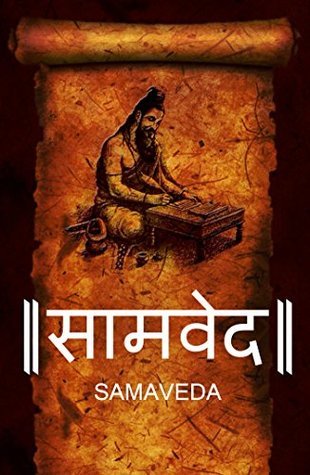Author : The authorship of most Vedas is uncertain and unknown.
The Samaveda, like the other Vedas, is not attributed to a single author but is considered a compilation of hymns and chants that were revealed to various ancient sages (rishis). These rishis are revered in the Vedic tradition for their spiritual insights and the divine revelations they received. Here is an introduction to some of the prominent sages associated with the Samaveda:
General Overview
- Oral Tradition: The Samaveda, like other Vedas, was transmitted orally through meticulous memorization and recitation for many centuries before being written down. This oral tradition ensured the preservation and accuracy of the texts.
- Divine Revelation: The hymns and chants in the Samaveda are believed to be ‘apauruṣeya,’ meaning they are not of human origin but were divinely revealed to the sages.
Prominent Sages Associated with the Samaveda
- Sage Veda Vyasa
- Role: Veda Vyasa, also known as Krishna Dvaipayana, is traditionally credited with compiling and organizing the Vedas into their present form. He divided the Vedas into four parts: Rigveda, Samaveda, Yajurveda, and Atharvaveda, and assigned them to different disciples.
- Contribution: Vyasa’s efforts in compilation ensured that the Samaveda’s hymns and chants were systematically arranged for ritualistic and musical purposes.
- Sage Jaimini
- Role: Jaimini is one of the principal disciples of Veda Vyasa. He is particularly associated with the Samaveda and is credited with propagating its teachings.
- Contribution: Jaimini is traditionally believed to have composed the Jaiminiya Brahmana, a significant prose commentary that explains the hymns and rituals of the Samaveda.
- Sage Paila
- Role: Paila was another disciple of Veda Vyasa who played a crucial role in the preservation and transmission of the Rigveda. His contributions indirectly influenced the Samaveda, as many of its hymns are derived from the Rigveda.
- Contribution: Paila’s meticulous preservation of the Rigveda ensured the continuity and accuracy of the hymns that were adapted for melodic chanting in the Samaveda.
- Other Rishis and Contributors
- Collective Effort: Numerous other sages contributed to the body of hymns and chants that comprise the Samaveda. These sages received divine revelations and composed hymns that were integrated into the Vedic corpus.
- Transmission: The contributions of these rishis were transmitted through generations by Vedic scholars and priests who maintained the oral tradition.
Significance of the Authors
- Rishis’ Role: The rishis are revered not only as composers of the Vedic hymns but also as seers who had the divine vision to perceive and articulate the cosmic truths contained in the Vedas.
- Spiritual Authority: The authority of the Samaveda, like other Vedas, is rooted in the belief that these texts are divinely inspired and revealed to the sages. This lends the Samaveda its sacred status and importance in Vedic rituals and Hindu religious practices.
Associated Texts
- Brahmanas and Upanishads: The Samaveda is associated with important prose texts like the Tandya Mahabrahmana and the Chandogya Upanishad, which provide explanations and philosophical insights into the hymns and rituals.
Conclusion
The Samaveda, a central text in the Vedic tradition, owes its existence and preservation to the collective efforts of numerous ancient sages. Figures like Veda Vyasa, Jaimini, and others played pivotal roles in compiling, organizing, and transmitting the hymns and chants that form the core of the Samaveda. These sages are revered for their spiritual insights and the divine revelations they received, which continue to influence Hindu rituals and musical traditions to this day. The Samaveda’s emphasis on melodic chanting and its connection to Vedic rituals highlight its enduring significance in the spiritual and cultural heritage of Hinduism.






